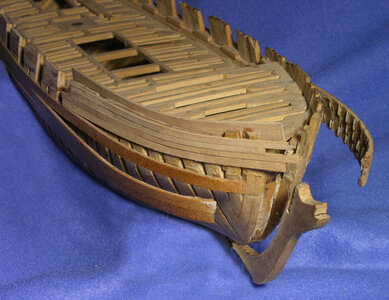- Joined
- Dec 1, 2016
- Messages
- 6,332
- Points
- 728

i built the Caustic about 6 years ago and because model builders thought the one big problem with kits were poor instructions. So i thought why not do a step by step video series.
Here is that series totally amateur in nature but hey it gets the job done.
Video one is an introduction to building the frames. When building frames the typical method is to use a drawing of the frame as a guide. I am using this system that will automatically give you the shape of the frames by building them on a jig using 3 points. one at the keel notch and one at the top of each side. Because the laser cut parts are exact copies of the edges of the frame what you will be doing is lining up the edges of the frame parts.
Here is that series totally amateur in nature but hey it gets the job done.
Video one is an introduction to building the frames. When building frames the typical method is to use a drawing of the frame as a guide. I am using this system that will automatically give you the shape of the frames by building them on a jig using 3 points. one at the keel notch and one at the top of each side. Because the laser cut parts are exact copies of the edges of the frame what you will be doing is lining up the edges of the frame parts.





